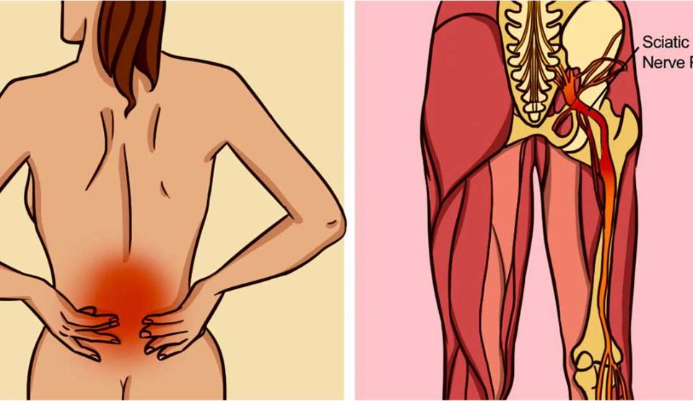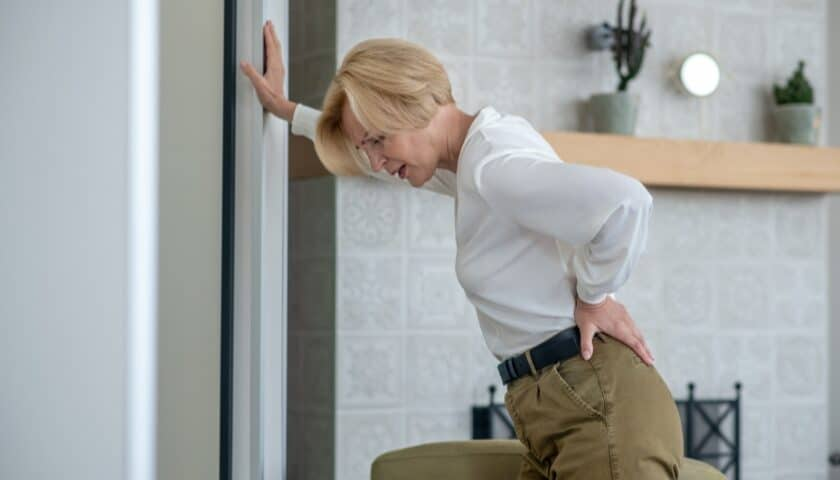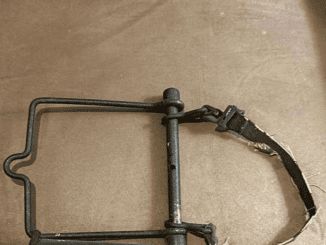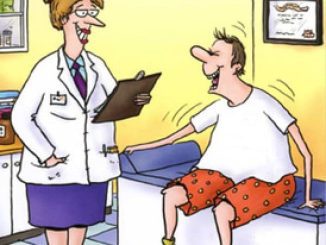Sciatica is a term used to describe the sharp, radiating pain that travels along the sciatic nerve, which runs from your lower back, through your hips and buttocks, and down each leg. This condition typically affects only one side of the body and can be debilitating, limiting your ability to move comfortably. Sciatica is often caused by issues like a herniated disk, bone spurs, or narrowing of the spine (spinal stenosis), all of which compress the nerve and lead to pain. To effectively manage sciatica, it’s essential to understand its causes, symptoms, and available treatments.
Common Causes of Sciatica

Sciatica is most commonly triggered by conditions that compress the sciatic nerve. The most frequent cause is a herniated disc, which occurs when the soft inner material of a spinal disc protrudes through its outer layer, pressing on the nerve. Other potential causes include:
- Spinal stenosis: Narrowing of the spinal canal that places pressure on the nerve.
- Degenerative disc disease: The breakdown of discs over time, leading to nerve compression.
- Spondylolisthesis: A condition where one vertebra slips forward over another, affecting nerve function.
- Piriformis syndrome: A condition where the piriformis muscle irritates the sciatic nerve, often from prolonged sitting or improper posture.
Understanding the underlying cause of your sciatica is critical for targeting the right treatment.
Recognizing the Symptoms of Sciatica
Sciatica symptoms vary depending on the severity of the nerve compression, ranging from mild discomfort to sharp, debilitating pain. Common symptoms include:
- Pain radiating from the lower back through the buttock and down the leg.
- A burning or tingling sensation in the leg.
- Weakness, numbness, or difficulty moving the leg or foot.
- Increased pain when sitting, coughing, or sneezing.
These symptoms typically affect only one side of the body, and they can worsen with prolonged inactivity. Recognizing the signs of sciatica early allows for timely treatment and reduces the risk of chronic pain.
Diagnosis and Medical Evaluation
A proper diagnosis of sciatica involves a detailed medical history and physical examination by a healthcare professional. During the exam, the doctor will assess muscle strength, reflexes, and the ability to perform simple movements like walking or raising your leg. Additional diagnostic tests may include:
- X-rays: To detect bone abnormalities or alignment issues.
- MRI or CT scans: To provide detailed images of the spine and identify soft tissue damage or disc herniation.
- Electromyography (EMG): To measure electrical impulses in the muscles and evaluate nerve function.
Accurate diagnosis is essential to determine the exact cause and extent of sciatic nerve compression, guiding the appropriate treatment plan.
Effective Treatment Options for Sciatica

Sciatica treatment aims to relieve pain, improve mobility, and address the underlying cause of nerve compression. Common treatment options include:
- Physical therapy: Strengthening exercises and stretches can relieve pressure on the sciatic nerve and improve flexibility.
- Medications: Anti-inflammatories, muscle relaxants, and pain relievers can reduce pain and inflammation.
- Corticosteroid injections: These injections reduce inflammation around the irritated nerve, providing temporary relief.
- Surgical intervention: In severe cases where conservative treatments fail, surgery (such as microdiscectomy or laminectomy) may be necessary to relieve pressure on the sciatic nerve.
Your healthcare provider will recommend a treatment plan based on the severity of your symptoms and the underlying cause of your sciatica.
Pain Management Techniques for Sciatica
Managing sciatica pain often involves a combination of self-care techniques and medical treatments. Some pain management strategies include:
- Heat and cold therapy: Applying cold packs during the first few days can reduce inflammation, while heat packs can relax tight muscles afterward.
- Gentle stretching: Stretching exercises can help relieve pressure on the sciatic nerve and improve mobility.
- Over-the-counter pain relievers: Medications like ibuprofen or acetaminophen can help reduce pain and inflammation.
- Topical pain relief creams: These can be applied directly to the affected area for localized pain relief.

Always consult your healthcare provider to develop a personalized pain management plan that addresses your specific needs.
Home Remedies for Sciatica Relief
In addition to medical treatments, several home remedies can provide relief from sciatica pain. These include:
- Cold and heat therapy: Applying cold packs to the lower back or buttocks for 20 minutes several times a day can reduce swelling. After a few days, switch to heat packs to soothe the muscles.
- Stretching exercises: Incorporate gentle stretches like the knee-to-chest stretch or piriformis stretch to relieve pressure on the sciatic nerve.
- Maintaining good posture: Proper posture, especially when sitting for long periods, can help prevent flare-ups.
- Over-the-counter pain relievers: Anti-inflammatory medications or topical creams can offer temporary relief.
These home remedies are most effective when used consistently, especially in conjunction with other treatment options.
When to Seek Professional Help for Sciatica

While mild sciatica often improves with self-care, there are instances where professional help is necessary. Seek medical attention if:
- The pain becomes severe or unbearable.
- Symptoms persist beyond a few weeks without improvement.
- You experience sudden or severe leg weakness.
- Bowel or bladder dysfunction occurs, which could indicate a medical emergency.
Timely intervention can prevent permanent nerve damage and improve your recovery prospects.
Preventative Measures for Long-Term Sciatica Relief
Preventing sciatica from occurring or recurring is possible with a few lifestyle adjustments. Some key preventive measures include:
- Regular exercise: Strengthening the muscles that support your spine and core can improve overall spinal health and prevent nerve compression.
- Proper lifting techniques: Use your legs, not your back, when lifting heavy objects to reduce strain on your lower back.
- Maintaining a healthy weight: Reducing excess weight minimizes pressure on the spine and sciatic nerve.
- Avoiding prolonged sitting: Taking breaks to stand and stretch throughout the day can prevent stiffness and relieve pressure on the lower back.
By incorporating these habits into your daily routine, you can reduce the risk of sciatica and maintain a healthier back.
Lifestyle Changes to Manage Sciatica Pain

Long-term management of sciatica often requires lifestyle changes that promote spinal health and reduce pain. These changes may include:
- Exercise regularly: Incorporate low-impact activities like swimming, walking, or yoga to improve flexibility and reduce pain.
- Ergonomic adjustments: Ensure your workstation is set up to support proper posture, with a supportive chair and computer screen at eye level.
- Quit smoking: Smoking decreases blood flow to the spine, which can worsen disc degeneration.
- Manage stress: Incorporating relaxation techniques like meditation or deep breathing can reduce muscle tension and alleviate pain.
By making these adjustments, you can not only alleviate sciatica pain but also improve your overall well-being.
Conclusion: Taking Control of Your Sciatica Pain
Sciatica can significantly impact your daily life, but with the right knowledge and approach, it’s possible to manage and even prevent this condition. From recognizing the symptoms early to seeking appropriate treatment, taking control of your sciatica pain is key to improving your quality of life. By incorporating home remedies, lifestyle changes, and professional treatments, you can reduce pain, regain mobility, and enjoy long-term relief from sciatica. Stay proactive in your care and consult with healthcare professionals when necessary to maintain a healthy and pain-free back.


